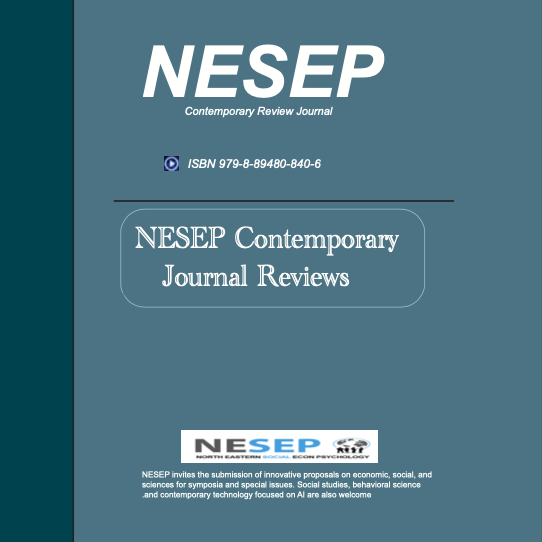Accepted Articles
We congratulate you on acceptance of your manuscript.

Annual Expo by the Journal of Young Explorers Meta and NESEP
- Fundamental or applied research
- Interdisciplinary research
- Judging on a rolling basis
- A work-in-progress research
- Completed research
- Unlimited topics and ideas
- ISBN 979-8-89480-840-6
- NESEP/NY-CSEF event at Harvard Club in NYC
The Effect of Sound Pollution on the Offspring of Exposed Daphnia magna
Abstract: Noise pollution is harmful to the environment due to intensity and duration. As human activities increase so does noise that is produced by boat and car traffic, machinery, electronics etc… Marine organisms are sensitive due to the vulnerability of sound pollution traveling underwater quicker and therefore becoming more intense. Organisms have characteristics that correspond to the ability to tolerate and adapt to sound frequencies. Depending on the quality of their auditory range it may affect an organism that cannot cope with sound frequencies. This could pose a threat to generations to come, as without adaptation through evolution it may cause species to go extinct and create problems in the food chain. This research study explores how sound pollution affects the offspring of exposed Daphnia magna as a scenario. The study was performed with three independent variables: 415, 425, and 435 Hz sound frequencies. The control group and the three experimental groups contained three Daphnia magna each. In the proceeding five days per week for two weeks, the experimental groups were exposed for 30 minutes. Any offspring that were produced were noted, separated, and then also exposed to sound frequencies. By the end of the study, all experimental groups of Daphnia magna could not adapt and survive. The control group survived with two Daphnia magna. Therefore, sound pollution may not be adaptable in terms of the intensity and duration of exposure for Daphnia magna within generations.
Reference
Brausch, J. M., & Salice, C. J. (2010). Effects of an environmentally realistic pesticide mixture on daphnia magna exposed for two generations. Archives of Environmental Contamination and Toxicology, 61(2), 272–279. https://doi.org/10.1007/s00244-010-9617-z
Chahouri, A., Elouahmani, N., & Ouchene, H. (2022). Recent progress in Marine Noise Pollution: A thorough review. Chemosphere, 291, 132983. https://doi.org/10.1016/j.chemosphere.2021.132983
Donald Hawkins, A. (2022). The impact of underwater sound on aquatic animals – and especially fishes. Examines in Marine Biology & Oceanography, 4(5). https://doi.org/10.31031/eimbo.2022.04.000597
Frongia, F., Forti, L., & Arru, L. (2020). Sound perception and its effects in plants and algae. Plant Signaling & Behavior, 15(12), 1828674. https://doi.org/10.1080/15592324.2020.1828674
Gu, S., Zhang, Y., & Wu, Y. (2016). Effects of sound exposure on the growth and intracellular macromolecular synthesis ofE. coliK-12. PeerJ, 4. https://doi.org/10.7717/peerj.1920
Kunc, H. P., McLaughlin, K. E., & Schmidt, R. (2016). Aquatic noise pollution: Implications for individuals, populations, and ecosystems. Proceedings of the Royal Society B: Biological Sciences, 283(1836), 20160839. https://doi.org/10.1098/rspb.2016.0839
Kunc, H. P., & Schmidt, R. (2019). The effects of anthropogenic noise on animals: A meta-analysis. Biology Letters, 15(11), 20190649. https://doi.org/10.1098/rsbl.2019.0649
The Lancet Regional Health – Europe. (2023). Noise pollution: More attention is needed. The Lancet Regional Health - Europe, 24, 100577. https://doi.org/10.1016/j.lanepe.2022.100577
McDonald-Madden, E., Sabbadin, R., Game, E. T., Baxter, P. W. J., Chadès, I., & Possingham, H. P. (2016, January 18). Using food-web theory to conserve ecosystems. Nature News. Retrieved February 10, 2023, from https://www.nature.com/articles/ncomms10245
Yağcilar, Ç., & Yardimci, M. (2021). Effects of 432 hz and 440 Hz sound frequencies on the heart rate, egg number, and survival parameters in water flea (daphnia magna). Journal of Ecological Engineering, 22(4), 119–125. https://doi.org/10.12911/22998993/134038